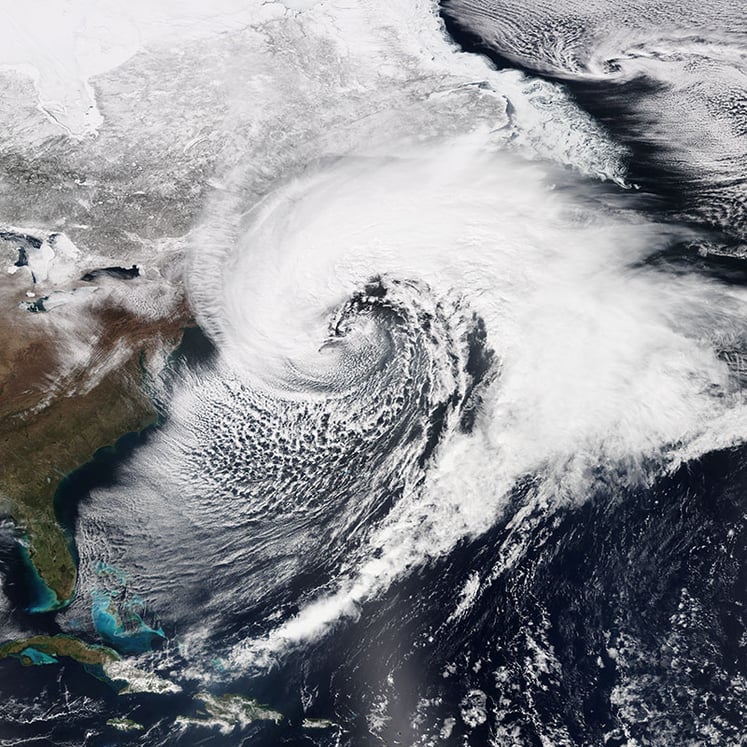Tis the Season for Nor’easters
by Daphne Thompson, on Dec 28, 2016 9:30:00 AM
Tis the season for Nor'easters. This is the time of the year that we start seeing the formation of Nor’easters along the Eastern Seaboard. These powerful storm systems can paralyze metropolitan areas with winds sometimes up to hurricane force. What are Nor’easters and what makes them so powerful?
Nor’easters, short for Northeasters, are low pressure systems that generally form and track northward along the U.S. East Coast and the Atlantic Coast of Canada. The term was derived from the direction of the strongest winds of this cyclonic system. While similar to tropical cyclones, in the fact that they are both low pressure systems, what makes them different is where they get their energy. Tropical cyclones get their energy from warm temperatures, while Nor’easters thrive on the cold air.

Occurring anytime of year, it is September to April when Nor’easters most often form. A developing low pressure system along the Eastern Seaboard can tap into temperatures from the north that are in the 20s and 30s and combine that with temperatures in the 60s and 70s from the Gulf Stream. Mix these two air masses together and you can be assured a powerful Nor’easter will develop.
When a Nor’easter tracks up the coast, residents in its path can experience very heavy rain, blizzard conditions, severe flooding, coastal erosion, hurricane-force winds or a combination of any or all of these conditions. This can lead to millions without power, stranded motorists and occasionally placing people’s lives in danger.
So, if you live along the Eastern Seaboard, pay attention to the weather. There is always a chance a Nor’easter may be coming to your neighborhood soon. Need a forecast for one of these powerful storms? Contact us.








